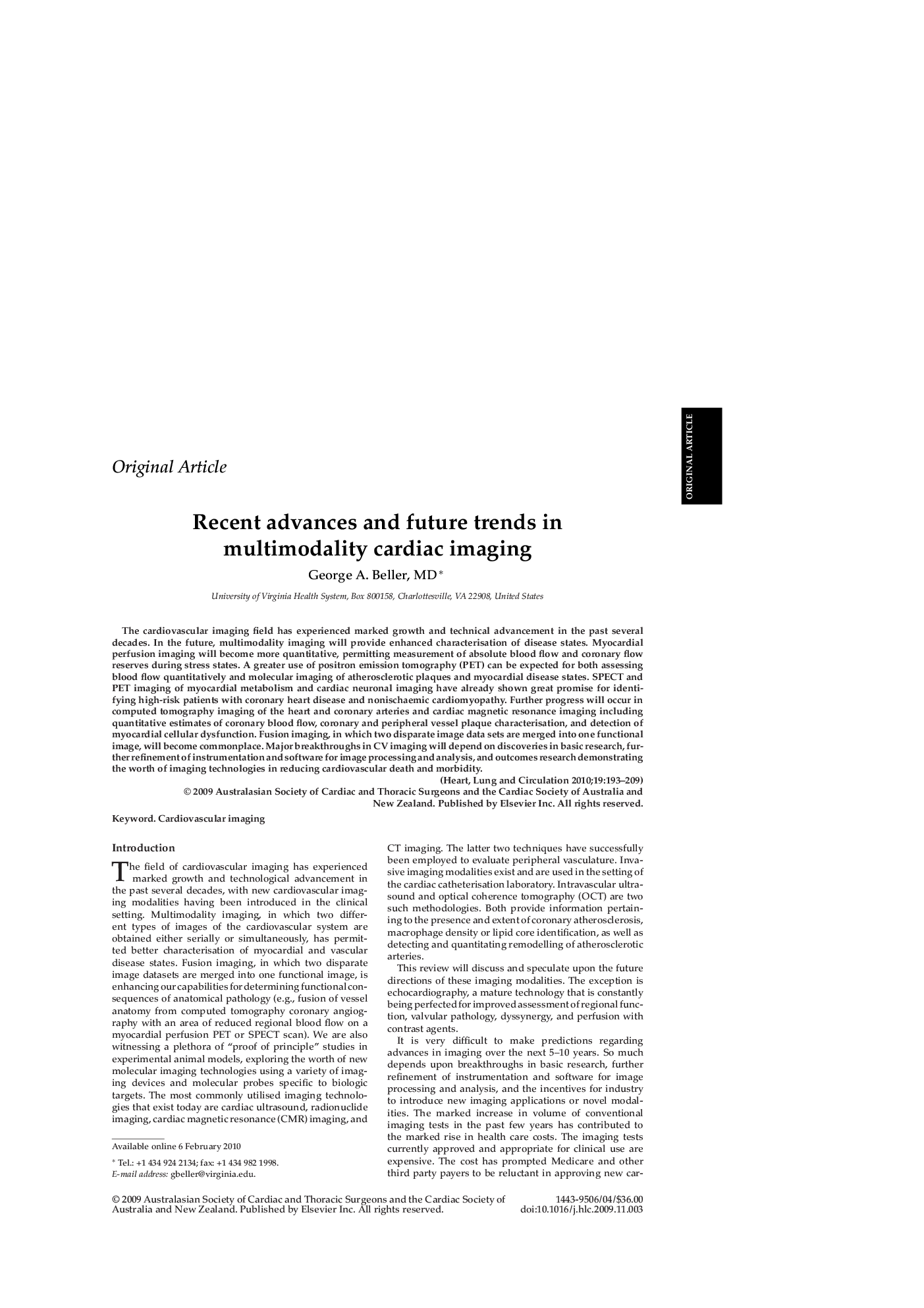| Article ID | Journal | Published Year | Pages | File Type |
|---|---|---|---|---|
| 2920987 | Heart, Lung and Circulation | 2010 | 17 Pages |
The cardiovascular imaging field has experienced marked growth and technical advancement in the past several decades. In the future, multimodality imaging will provide enhanced characterisation of disease states. Myocardial perfusion imaging will become more quantitative, permitting measurement of absolute blood flow and coronary flow reserves during stress states. A greater use of positron emission tomography (PET) can be expected for both assessing blood flow quantitatively and molecular imaging of atherosclerotic plaques and myocardial disease states. SPECT and PET imaging of myocardial metabolism and cardiac neuronal imaging have already shown great promise for identifying high-risk patients with coronary heart disease and nonischaemic cardiomyopathy. Further progress will occur in computed tomography imaging of the heart and coronary arteries and cardiac magnetic resonance imaging including quantitative estimates of coronary blood flow, coronary and peripheral vessel plaque characterisation, and detection of myocardial cellular dysfunction. Fusion imaging, in which two disparate image data sets are merged into one functional image, will become commonplace. Major breakthroughs in CV imaging will depend on discoveries in basic research, further refinement of instrumentation and software for image processing and analysis, and outcomes research demonstrating the worth of imaging technologies in reducing cardiovascular death and morbidity.
